- عنوان کتاب: Applied TinyML -End-to-end machine learning for microcontrollers with examples
- نویسنده: Ricardo Cid
- حوزه: یادگیری ماشین
- سال انتشار: 2025
- تعداد صفحه: 331
- زبان اصلی: انگلیسی
- نوع فایل: pdf
- حجم فایل: 6.86 مگابایت
ایده این کتاب از علاقه من به تلاقی یادگیری ماشین و سیستمهای تعبیهشده نشأت گرفته است. در چند سال گذشته، دیدهام که چگونه هوش مصنوعی صنایع را متحول کرده است. بسیاری از قدرتمندترین برنامهها همچنان در سرورهای ابری و زیرساختهای محاسباتی بزرگ محصور ماندهاند. هدف من از این کتاب، کمک به پر کردن این شکاف با نشان دادن به خوانندگان است که میتوان هوش را به دستگاههای پیشرفته آورد و TinyML را برای مهندسان، سازندگان و نوآورانی که میخواهند یادگیری ماشین را در دنیای واقعی و محیطهای کممصرف مستقر کنند، در دسترس قرار داد. TinyML جدیدترین مرز برای مدلهای هوش مصنوعی و یادگیری ماشین است، زیرا محدودیتهای آن در همه جا وجود دارد. حافظه کمیاب است و محاسبات در مقایسه با محاسبات سنتی که برای آموزش و اجرای مدلها استفاده میشود، به مراتب کوچکتر است. با این حال، در آن یکی از بزرگترین پنجرههای فرصت در سالهای اخیر نهفته است. وقتی به آینده فکر میکنید، فقط ویرایشگرهای متنی را که به شما در نوشتن نامه کمک میکنند، تصور نمیکنید، بلکه یک دنیای فیزیکی تعاملی، لوازم خانگی و دستگاههای مستقل که به طبیعیترین شکل با مردم تعامل دارند، مبلمان راحت، لباسهای هوشمند و گجتهای شخصیسازی شده را تصور میکنید. همه اینها نوید بزرگ TinyML است. این فرصت بینظیری است که نه تنها در آینده زندگی کنیم، بلکه آن را خلق کنیم. جنبه مهم دیگر این کتاب، وسعت آن است. اصول هر مفهوم به طور خلاصه توضیح داده شده است؛ با این حال، تنوع حوزههای تحت پوشش گسترده است. به جای تمرکز صرف بر جنبه علم داده مدلهای TinyML، طراحی سیستم (الزامات به یک مسئله تجاری فرضی که باید حل شود، نگاشت میشوند)، چالشهای کسب داده (به جای فرض صرف وجود یک مجموعه داده آماده موجود در اینترنت)، استخراج ویژگی (که مستقیماً تحت تأثیر کیفیت داده است، یک مسئله واقعی در محیطهای تولید)، طراحی مدل (درک نحوه عملکرد مدل در زیر کاپوت در محیطهای محدود که اتلاف منابع گزینهای نیست، بسیار مهم است)، پیکربندی قطعات الکترونیکی (استفاده از قطعات الکترونیکی موجود به جای اجرا در شبیهسازها)، شبکهسازی (از آنجا که راهحلهای دنیای واقعی اغلب در یک سطح توزیع میشوند تا محدود به یک مکان واحد)، ملاحظات مربوط به توان (زیرا اتصال به شبکه برق را نمیتوان فرض کرد) و تحقیقات مربوط به فهرست مواد (زیرا هزینه یک معیار اساسی در سیستمهای واقعی است) را نیز در نظر میگیریم. فصل 1: مبانی و روششناسی – این فصل خواننده را با مفاهیم و اصطلاحات استفاده شده در سراسر کتاب آشنا میکند. همچنین دامنه هر یک از موارد استفاده در این کتاب را مشخص کرده است. فصل 2: طبقهبندی صدا – این فصل بر شناسایی ویژگیهایی که صداها را بر اساس موارد استفاده خاص آنها تعریف میکنند، تمرکز دارد. ما از ضرایب کپسترال فرکانس مل (MFCC) برای صداهای انسان استفاده میکنیم که در تشخیص ویژگیهای زبانی مانند ریتم عطفی و سکوتها عالی هستند. ضرایب فوریه برای صداهای گذرا به کار میروند تا صدا را با توزیع توان آن در فرکانسها مشخص کنند، که برای ثبت مشخصات انرژی منحصر به فرد هر صدا ضروری است. صداهای دورهای از طریق تجزیه و تحلیل طیفی تجزیه و تحلیل میشوند تا امضاهای فرکانسی متمایز آنها را کشف کنند. ما از شبکههای عصبی کانولوشنی برای استفاده از نمایش مکانی صدا (در طول زمان و بزرگی) برای تشخیص الگو استفاده میکنیم و مدل را برای تبدیل لایه خروجی به یک توزیع احتمال مورد استفاده برای طبقهبندی نمونه صدا آموزش میدهیم. فصل 3: طبقهبندی حرکت – در بررسی طبقهبندی حرکت، دادهها را از سه شتابسنج که به صورت متعامد قرار گرفتهاند جمعآوری میکنیم تا حرکت جسم را به طور دقیق توصیف کنیم. با تجزیه خوانشهای شتابسنج به سیزده ویژگی متمایز و تقسیم موج به پنجرههای زمانی کوچک، معیارهایی مانند جذر میانگین مربعات، کشیدگی، کشیدگی طیفی و چولگی را محاسبه میکنیم. این معیارها جنبههای حیاتی حرکت را از توان متوسط که نشاندهنده انرژی حرکت است تا کشیدگی و چولگی آشکار میکنند و بینشهایی در مورد فرکانس و ناگهانی بودن حرکات ارائه میدهند. مجموعه دادههای غنی به یک شبکه عصبی متراکم تغذیه میشوند و طبقهبندی دقیق حرکات را از ملایم تا شدید امکانپذیر میکنند. فصل 4: طبقهبندی تصویر – با تمرکز بر طبقهبندی تصویر، تصاویر را از طریق اتصال مستقیم به یک دوربین دیجیتال متصل به یک میکروکنترلر به دست میآوریم. مراحل پیشپردازش شامل تنظیم تصویر به فرمت مربعی و اگر رنگ حیاتی نباشد، تبدیل آن به مقیاس خاکستری 8 بیتی برای سادهسازی کاربرد مدلهای تشخیص شیء است. تصاویر به اندازه استاندارد تغییر اندازه داده میشوند تا با ظرفیت شبکه عصبی مطابقت داشته باشند. به جای آموزش از ابتدا، ما از مدلهای استاندارد صنعتی TinyML و تکنیکی به نام یادگیری انتقالی برای آموزش کارآمد مدل با مجموعه دادههای خود استفاده میکنیم و به یک سیستم سریع و دقیق که در سناریوهای مختلف بینایی ماشین قابل اجرا است، دست مییابیم. فصل ۵: ردیابی شیء – این فصل ردیابی را معرفی میکند، تکنیکی که اغلب با طبقهبندی تصویر همراه میشود تا شامل موارد زیر باشد…
The idea for this book was born from my fascination with the intersection of machine learning and embedded systems. In the last few years, I have seen how AI has transformed industries. Many of the most powerful applications remain locked within cloud servers and large computing infrastructures. My goal with this book is to help bridge that gap by showing readers that it is possible to bring intelligence to edge devices and make TinyML accessible to engineers, makers, and innovators who want to deploy machine learning in real world, low power environments. TinyML is the latest frontier for AI and ML models, as its constraints are everywhere. Memory is scarce, and computing is smaller by orders of magnitude compared to traditional computing used to train and run the models. Therein, however, lies one of the greatest opportunity windows in many years. When you think about the future, you do not imagine just text editors that help you write a letter but an interactive physical world, appliances and stand-alone devices transacting with people in the most natural way, friendly furniture, smart clothing, and personalized gadgets. All of that is the great promise of TinyML. It is our once-in-a-lifetime opportunity to not only live in the future but to create it. Another important aspect about this book is its breadth. The principles of each concept are explained lightly; however the variety of domains covered is wide. Instead of focusing solely on the data science aspect of the TinyML models, we include system design (requirements are mapped to an hypothetical business problem that needs to be solved), data acquisition challenges (rather than just assuming the existence of a ready made data set available on the internet), feature extraction (which is directly impacted by data quality, a real issue in production environments), model design (understanding how the model works under the hood is critical in constrained environments where resource waste is not an option), electronic component configuration (using existing electronic components instead of just running in simulators), networking (since real world solutions are often distributed across a surface rather than confined to a single location), power considerations (as connection to the electric grid cannot be assumed), and bill of materials research (because cost is a fundamental metric in real-life systems). Chapter 1: Foundation and Methodology – This chapter walks the reader through the concepts and terminology used throughout the book. It also established the scope of each one of the use cases in this book. Chapter 2: Sound Classification – This chapter focuses on identifying the features that define sounds according to their specific use cases. We utilize Mel Frequency Cepstral Coefficients (MFCC) for human voices, which excel in recognizing linguistic attributes such as inflection rhythm and silences. Fourier Coefficients are employed for transient sounds to delineate the sound by its power distribution across frequencies, which is essential for capturing the unique energy profile of each sound. Periodic tones are analyzed through spectrum analysis to uncover their distinctive frequency signatures. We employ Convolutional Neural Networks to leverage the spatial representation of sound (across time and magnitude) for pattern recognition, training the model to convert the output layer into a probability distribution used to classify the sound sample. Chapter 3: Movement Classification – In exploring movement classification, we gather data from three orthogonally placed accelerometers to accurately describe object movement. By breaking down the accelerometer readings into thirteen distinct features and segmenting the wave into small time windows, we calculate metrics such as root mean square, kurtosis, spectral kurtosis, and skewness. These metrics reveal critical aspects of movement, from the average power indicating the movement’s energy to kurtosis and skewness, offering insights into the frequency and suddenness of movements. The rich dataset feeds into a dense neural network, enabling precise classification of movements ranging from gentle to vigorous. Chapter 4: Image Classification – Focusing on image classification, we acquire images through a direct connection to a digital camera interfaced with a microcontroller. Preprocessing steps include adjusting the image to a square format and, if color is not critical, converting it to 8-bit grayscale to streamline object recognition models’ application. Images are resized to a standard size to accommodate the neural network’s capacity. Rather than training from scratch, we apply industry standard TinyML models and a technique called transfer learning to efficiently train the model with our dataset, achieving a fast and accurate system applicable across various machine vision scenarios. Chapter 5: Object Tracking – This chapter introduces tracking, a technique often paired with Image Classification to consistently identify an object across sequential video frames. Whether tracking moving or static objects, the method involves first classifying objects with a Convolutional Neural Network and then comparing their sequential positions to deduce if they are the same based on proximity. Successful tracking assigns consistent IDs to objects, maintaining identity even through temporary classification lapses or visual obstructions, showcasing the robustness of a good tracking algorithm. Chapter 6: Sensor Fusion – Sensor Fusion is examined as an advanced method of combining data from multiple sources to generate new insights. We categorize sensor fusion into complementary, competitive, and cooperative types. Complementary fusion brings together different data perspectives of the same event, while competitive fusion seeks reliability through redundancy in data acquisition. Cooperative fusion merges data from unrelated events to synthesize new information, highlighting the technique’s versatility in enhancing system perception. Chapter 7: Deep Learning Regression – This chapter explores using deep neural networks to infer numerical values from one or more data sources. We demonstrate how integrating feature engineering with deep learning can expand the realm of regression applications. We discuss developing control systems using regression models with multiple inputs and outputs that apply continuous learning and adaptation to current conditions. This chapter illustrates how regression can forecast future conditions based on historical data, opening new possibilities for predictive analytics. Chapter 8: Anomaly Detection – This chapter examines the anomaly detection method, which aims to identify occurrences that deviate from expected patterns. Distinguishing itself from classification, anomaly detection focuses on detecting behaviors or events previously unseen by the model.
این کتاب را میتوانید از لینک زیر بصورت رایگان دانلود کنید:
Download: Applied TinyML




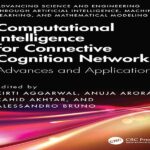

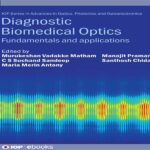


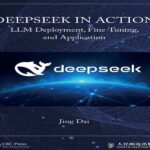



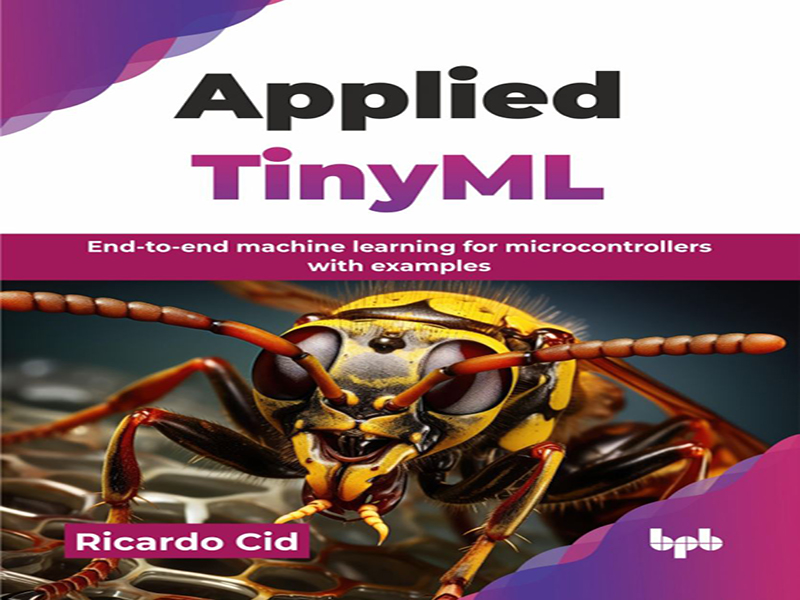

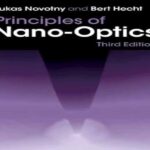





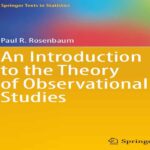

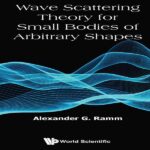
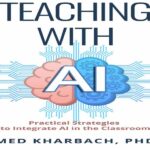







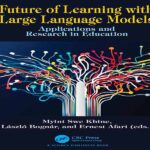

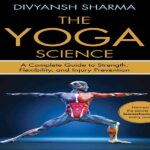
نظرات کاربران